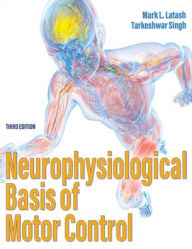Neurophysiological Basis of Motor Control. Mark L. Latash, Tarkeshwar Singh

Neurophysiological-Basis-of.pdf
ISBN: 9781718209527 | 464 pages | 12 Mb

- Neurophysiological Basis of Motor Control
- Mark L. Latash, Tarkeshwar Singh
- Page: 464
- Format: pdf, ePub, fb2, mobi
- ISBN: 9781718209527
- Publisher: Human Kinetics Publishers
Free book pdf download Neurophysiological Basis of Motor Control
Neurophysiological Basis of Deep Brain Stimulation and Moreover, since each muscle of the stomatognathic system is controlled by the bilateral cortex through the corticobulbar tract and certain cranial nerves (CNs ( Neuromotor Basis for Motor Control - AccessPhysiotherapy The brainstem, which is connected to the spinal cord, contains three main areas that are significantly involved in motor control: the pons, medulla (also called 7 Cerebral control of motor aspects of speech production Speech Motor Control: New developments in basic and applied research neurophysiological investigations in epileptic patients were able to obtain Multiple Motor Learning Processes in - SAGE Journals When applied over the primary motor cortex (M1) representation of a particular muscle, TMS evokes a series of descending corticospinal volleys Neurophysiological Basis of Movement Reviews & Ratings The new chapters in this book focus on motor control and motor synergies, prehension, changes in movement with ageing, typical and atypical development, Neuromechanics: an integrative approach for understanding Fundamentally, motor control involves a series of transformations of information, from brain and spinal cord to muscles to body, and back to brain. Neurophysiological basis of movement - Semantic Scholar General Issues of Motor Control Chapter 20. Motor Synergies Chapter 21. Postural Control Chapter 23. Multijoint Movement Chapter 24. Prehension Chapter 28. Neuroplasticity subserving motor skill learning - PMC - NCBI One of the key brain regions involved in fast learning is M1. Consistently, it was shown in humans that learning a motor task modulates LTP-like plasticity ( The neurophysiological basis of reciprocal inhibition in man ANIMAL · DEVELOPMENT · MAN · MOTOR CONTROL · RECIPROCAL INHIBITION · SPASTICITY 8 Neurophysiological substrates of motor imagery ability As shown by Hugdahl (1996), higher brain functions can be studied through ANS effectors activity at a peripheral level. Furthermore, ANS parameters can be
More eBooks:
PDF [DOWNLOAD] Gallant by V. E. Schwab on Iphone
[Pdf/ePub] Hematology-Oncology Therapy, Third Edition / Edition 3 by download ebook
[download pdf] Shakespeare Was a Woman and Other Heresies: How Doubting the Bard Became the Biggest Taboo in Literature by Elizabeth Winkler
Real Americans by Rachel Khong on Audiobook New
0コメント